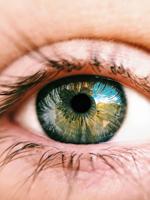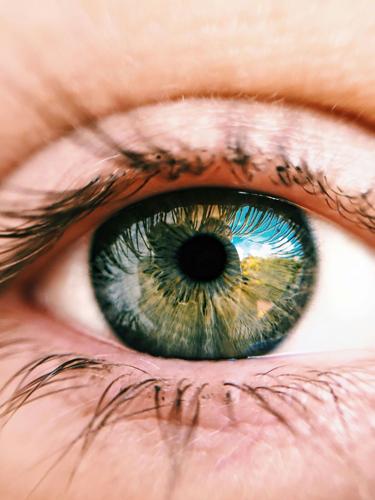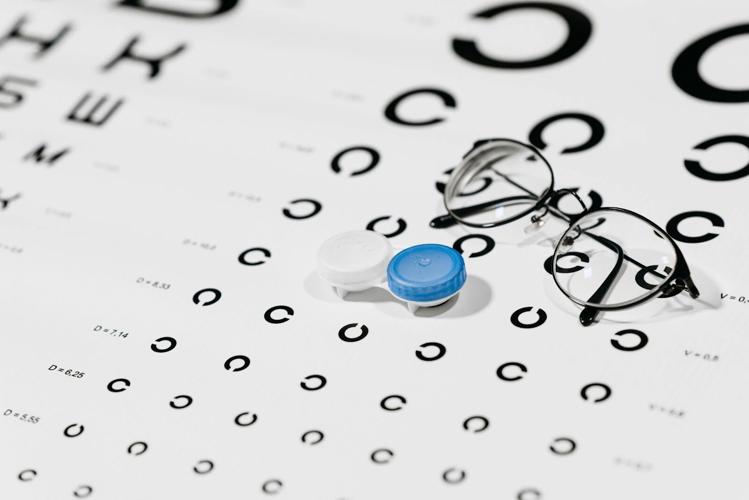Age-related cataracts are a common condition that causes visual impairment and blindness. If you’ve been diagnosed with cataracts or think you may suffer from the problem (or have a friend or family member who suffers), it’s important to be informed on how the condition presents, progresses, and is ultimately treated.
This article will help you with each of those important areas. By the end, you’ll have a much more thorough understanding of cataracts and can work towards the best treatment plan for you or your loved one.

What is an Age-Related Cataract?
Essentially, a cataract is a clouding of the lens, and the problem is often ‘age-related’ because this clouding predominantly occurs due to life-long degradation (causes that will be discussed in the following section). The condition can affect one or two eyes and usually occurs with a gradual onset.
The job of the lens is to focus light into the retina, which allows our brain to interpret the world around us. When someone develops a cataract, this process cannot be properly executed, resulting in the delivered light being distorted which causes a blurring of the person’s vision.
What Causes Age-Related Cataracts?
Age-related cataracts have many different causes. Oxidative stress (the imbalance of free radicals to antioxidants in the body) can be a contributing factor, as this damages the delicate proteins and fats within the eye.
Smoking and alcohol also contribute to an increased risk (both of which are known to increase oxidative stress), and several co-existing medical conditions can be a risk factor. For example, Type-2 Diabetes can have a profound effect due to the impact excess blood glucose has on the small blood vessels of the eye (when too much glucose [sugar] is in the bloodstream, it can cause significant damage or ‘rot’ over time).
Genetics and family history also play a role – if you have a family member with cataracts, you may be at a higher risk of developing one yourself.
Key Signs and Symptoms
Given that age-related cataracts are considered a progressive condition, it can sometimes be difficult to notice the subtle signs and symptoms until they become more severe. Here’s what to look out for:
Blurred or Cloudy Vision
This is the hallmark of the condition and is often the first symptom brought to people's attention, and the one that prompts them to go and get help.
Increased Sensitivity to Brightness
A person experiencing age-related cataracts will likely have sensitivity to bright environments, such as intense daylight and those with harsh artificial lights.
Difficulty Seeing in Dim Light
On the flip side, the person may also simultaneously have issues navigating space in dark or dim lighting conditions.
Seeing Halos
Seeing halos refers to noticing a faint circular rim around a light source: this is due to a decreased ability to appropriately filter light in the affected lens.
There may be other symptoms unique to your particular case, so be sure to relay any issues you may be experiencing to the relevant healthcare professional.

Diagnosing Cataracts
The first port of call for getting a diagnosis is an eye exam with a qualified optician, of which there are several different steps.
The first is usually a visual acuity test: this measures how well you can see at various distances, and will be familiar to you if you’ve had an eye test for glasses before. The optician will also use a special type of microscope called a slit-lamp, which utilizes an intense beam so that they can properly visualize the intricate components of the eye.
After this, you’ll have a retinal exam. This portion of the examination involves dilating the pupil so that the optician can get a good visual of the retina to diagnose any further abnormalities or deviations. Finally, tonometry – a test that measures the pressure within the eye (otherwise known as interocular pressure or IOP) – may be done to rule out other eye conditions that may be a contributing factor.
Treatments for Age-Related Cataracts
Treatment for age-related cataracts can be broadly categorized into surgical and non-surgical. Here’s a breakdown of both:
Non-Surgical Interventions
If the symptoms that the person is experiencing due to cataracts are mild, or if the condition itself is in the early stages, it is often recommended to manage it for the time being. There are many different ways to do so, with one of the simplest measures being the gradual modification of their eyeglasses to account for the mild alterations in vision: glasses designed to cater to those with cataracts often employ magnifying lenses or antiglare coatings.
Lifestyle interventions can also make a difference. Given the apparent effects on the progression of cataracts, quitting smoking and limiting alcohol consumption is a good idea (and is beneficial for the person’s overall health anyway), and a diet rich in antioxidants (foods like berries, nuts, and leafy greens) can help counteract the build-up of free-radicals and the consequent oxidative stress.
Surgical Intervention
Cataracts are a progressive problem, so eventually, surgery may be the only option. Cataract surgeons can employ a variety of methods to resolve the problem – here are the standard treatments:
Laser-Assisted Surgery: Laser-assisted cataract surgery involves using a medical-grade laser to create tiny incisions in the cataract to break it up and rejuvenate the eye beneath.
Phacoemulsification: This type of surgery works by making an incision at the cornea (the clear outer layer of the eye) and using ultrasound to break up the cataract. The segments are then removed, and an artificial intraocular lens (IOL) is placed to restore function.
Extracapsular Cataract Extraction (ECCE): This method is typically reserved for very advanced cases, as it involves a much larger incision to remove the cataract in one piece. An IOL is then placed afterward.
Hopefully, you’re now much clearer on what cataract is and how it’s treated. Thankfully, there are several options for rejuvenating the eye back to normal functioning, so if you or a loved one are suffering from the condition, know that there’s always hope!




(0) comments
Welcome to the discussion.
Log In
Keep it Clean. Please avoid obscene, vulgar, lewd, racist or sexually-oriented language.
PLEASE TURN OFF YOUR CAPS LOCK.
Don't Threaten. Threats of harming another person will not be tolerated.
Be Truthful. Don't knowingly lie about anyone or anything.
Be Nice. No racism, sexism or any sort of -ism that is degrading to another person.
Be Proactive. Use the 'Report' link on each comment to let us know of abusive posts.
Share with Us. We'd love to hear eyewitness accounts, the history behind an article.